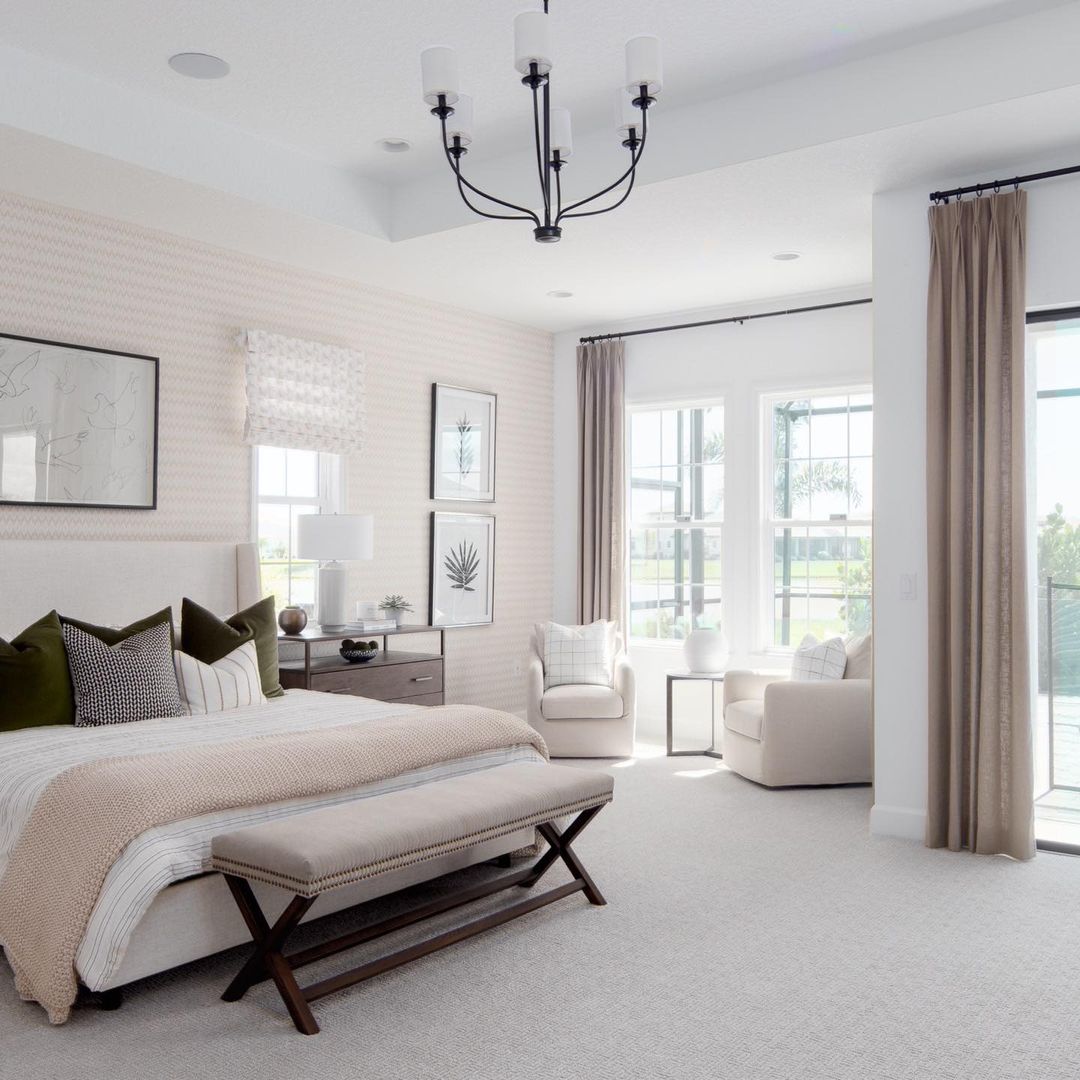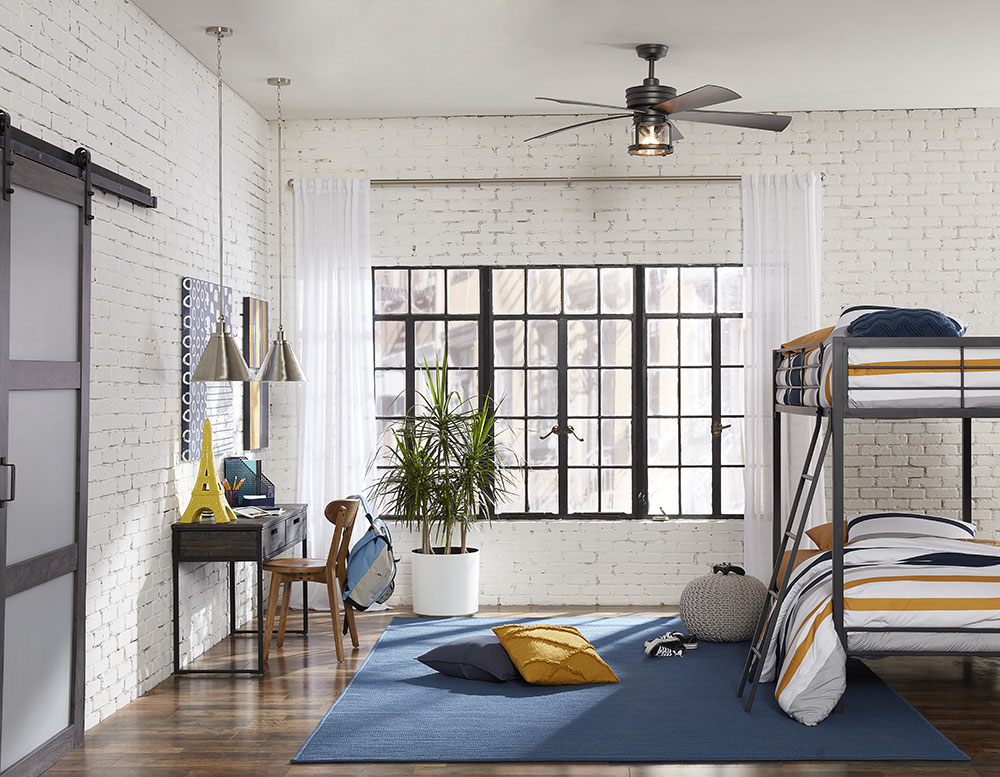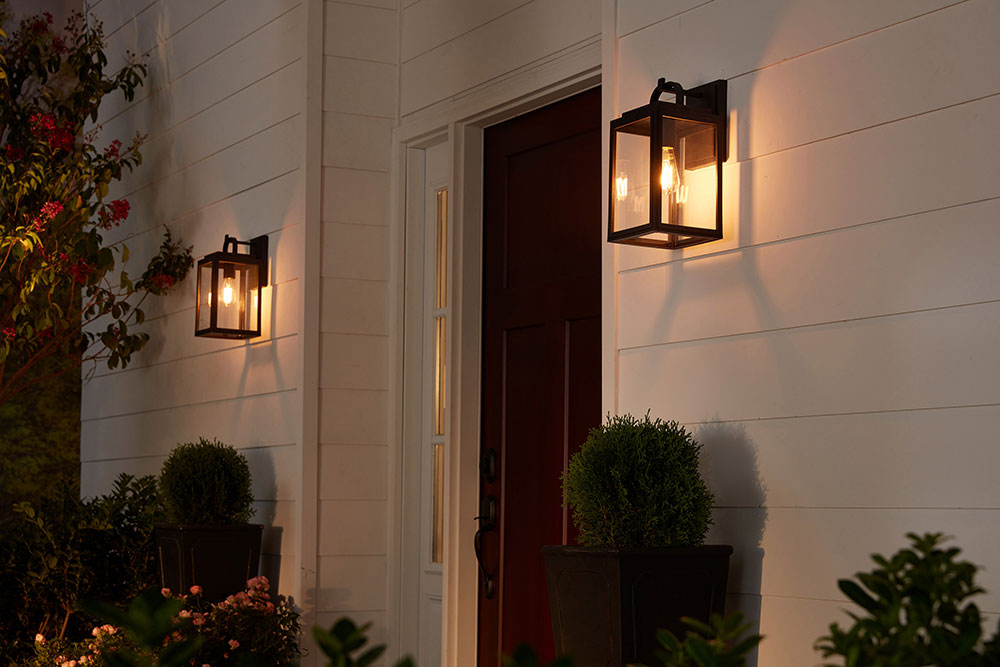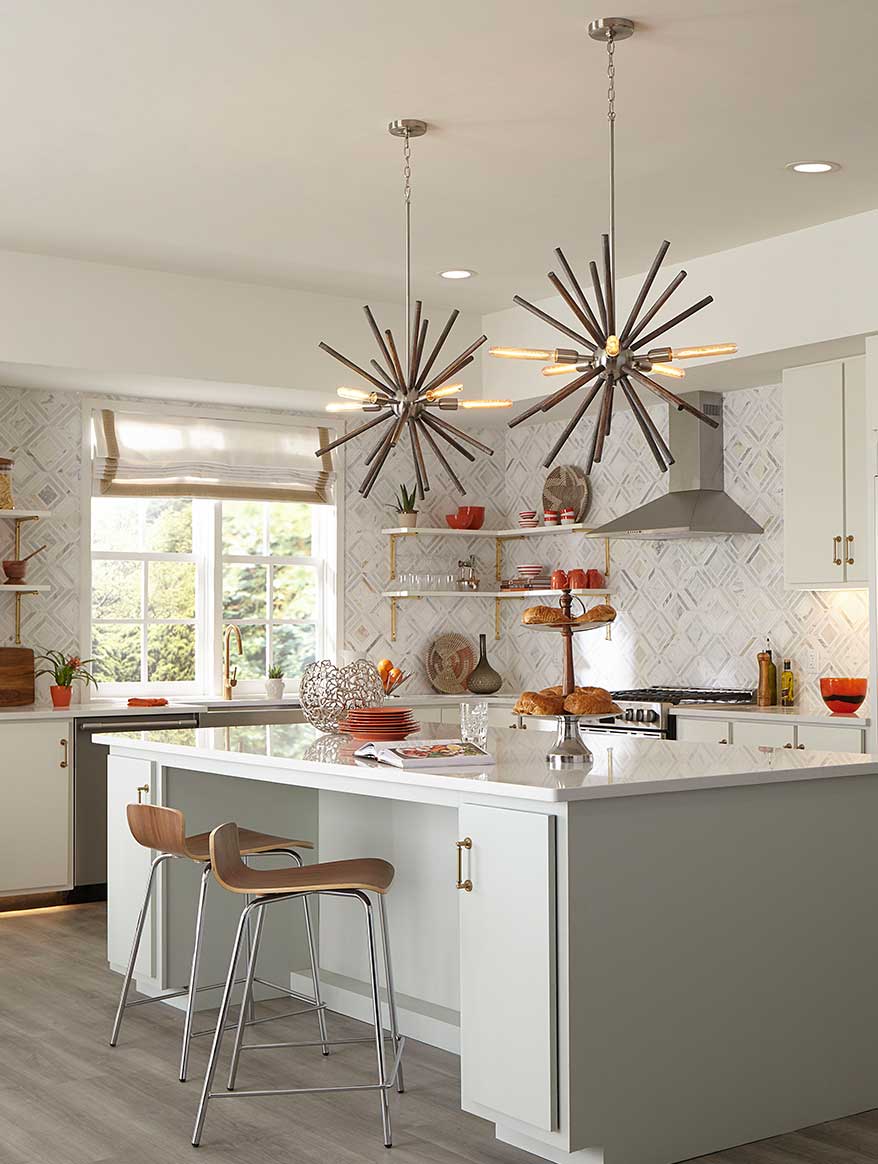Daylight Saving Time Ends on Sunday, November 7, 2021
Daylight Saving Time ends this Sunday. Mornings will be brighter an hour earlier, while evenings will get dark an hour sooner. Just this simple one-hour time change can take our bodies up to a week to adjust! However, we have some lighting tips that can help you adjust to the loss of an hour of light at the day's end.
- Maximize natural light as much as possible.

Photo by: Viera Builders featuring Bonita chandelier
To adjust to the end of daylight saving time, try to get into natural light as soon as possible at the start of your day. Exposure to natural light will help you sync your circadian rhythm to the new time. To let more daylight in, keep the curtains open. If privacy is an issue, install sheer curtains to allow more natural light into your home.
- Position your desk near a window.

Featuring Hinton and Midvale
If you're working from home, take advantage of the opportunity to control the amount of light in your workspace. For example, if the room has natural light streaming from windows, place your desk perpendicular to the window, ideally facing north or south, so that sunlight does not cast shadows at certain times of the day. If an overhead fixture is the only light source, situate your workstation so that the light shines from behind it.
- Program exterior and interior lights to go on when darkness arrives.

Featuring Grandbury
"Smart" lights use pre-set programs to turn lights on and off automatically. Avoid coming home to a dark house by programming your lighting to come on when the sun goes down. Cutting-edge smart home products allow you to control light fixtures with phones, tablets or voice, changing the tone, brightness, and even the color of the light.
- Layer the light for safety and ambiance.

Featuring Thorpe
Light layering is a multi-layered approach that combines three types of light: ambient (general light), task, and accent lighting. These different light levels will add extra light for increased safety and better ambiance during dark winter days. Ambient light comes from ceiling lights like recessed downlights, flush mount and semi-flush mount fixtures or chandeliers. Task lighting directs light on specific areas to add more light for tasks like cooking, homework or reading. Pendant lights, undercabinet lights and adjustable downlights are just a few of the many task lights available. Finally, accent lighting like wall lanterns or wall sconces is ideal for eliminating dark shadows and corners.
- Light your life with LED

Installing LED light fixtures that have color selectable technology integrated inside them is one of the newest ways to control light in your home. "Selectable" means that there are multiple distinct white light settings within the LED. With just a flip of a switch, color selectable LEDs can change between pre-set color temperatures of white light, from warm to cool settings, to create the perfect mood during the dark days of fall and winter.
Check out more lighting tips here.

